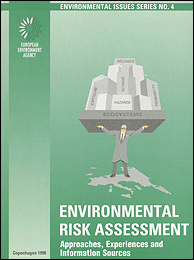All official European Union website addresses are in the europa.eu domain.
See all EU institutions and bodiesEnvironmental issue report 4/-1
EN PDF: GH-07-97-183-EN-C - ISBN: 92-9167-080-4
All official European Union website addresses are in the europa.eu domain.
See all EU institutions and bodiesEnvironmental issue report 4/-1
Report (PDF)

Environmental Risk Assessment - Approaches, Experiences and Information Sources
Environmental issue report 4/-1
24 Mar 1998
EN PDF: GH-07-97-183-EN-C - ISBN: 92-9167-080-4